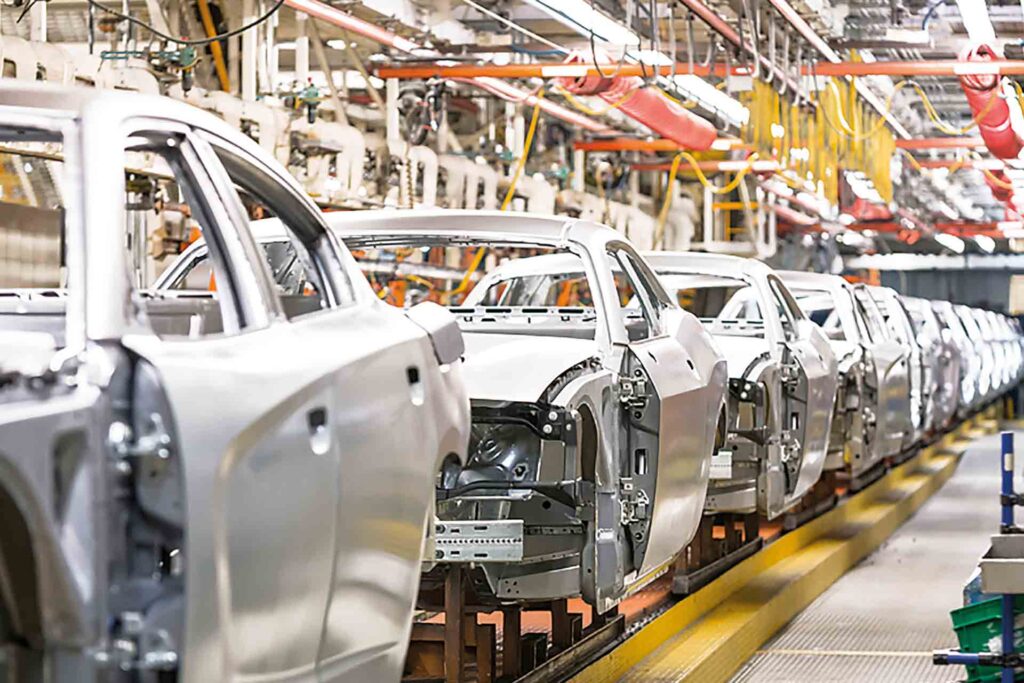The automotive industry is one of the most important in the country, contributing 3.5% of the national GDP and 18.3% of the manufacturing GDP, in addition to positioning the country as one of the most important in the world. Mexico in the first place of auto parts exports to the United States. United States and fifth in the world, however, it is also a priority area for the decarbonization.
According to sustainability consulting firm Engie Impactemissions, the automotive industry contributes 12% of the total emissions of greenhouse gases Mexico must accelerate its steps towards decarbonization in order to maintain its competitiveness in this sector.
Mexico currently has 21 assembly plants of 15 brands located mainly in the Bajío, Central and Northern regions of the country and a production of more than 3 million vehicles in 2022.
Engie Impact points out that the leaders of the major assemblers (OEMs) and Tier suppliers 1, 2 and 3 have set increasingly challenging decarbonization targets to move from carbon neutrality to zero carbon.
The automotive sector has made progress in the development and production of hybrid and electric vehiclesHowever, progress needs to be made in the decarbonization of operations and the decarbonization of materials and auto parts manufacturing within its supply chain.
Engie Impact believes there are five strategies that automakers and suppliers with operations in Mexico can implement to curb GHG emissions within their plants and value chain.
1.- Identification of the main sources of emissions
Each company must be aware of the emissions resulting from its operations, both at plant and business unit level. These derive mainly from on-site fossil fuel use, electricity use and emissions within the value chain.
In particular, for OEMs and auto parts companies, the emissions generated along the value chain are of great relevance, since a large part of them come from the materials used by the assemblers. And without a doubt, the end use of vehicles, most of which still require fossil fuels to operate, is the main source of carbon dioxide emissions.
Prioritization of lines of action
Based on the identification of the main sources of emissions, it is possible to define the priorities of the different decarbonization levers. In order of influence, it is common for companies to start by setting decarbonization targets for the emissions over which they have control within their operations, and then focus on the emissions in the value chain, or those of lesser influence.
On the other hand, it is important to consider the scale of these actions and the impact they can have, either at a single plant or at all operating sites. For example, one can prioritize reducing the consumption of fossil fuels such as diesel, and evaluate green fuel alternatives in all plants, or focus efforts on maximizing emissions reductions in older or less energy efficient facilities, or plants of greater prominence due to their size or regional presence.
In addition, it is important to define short- and long-term goals, considering the total discounted cost of certain initiatives and also the availability of technology today and in the future, internal policies and applicable regulations, on-site technical feasibility, among other criteria. It is also advisable to establish follow-up indicators to regularly measure and report progress towards the established goals.
3.- Energy efficiency and fuel switching
Energy efficiency provides a comprehensive approach to resource management across operations to manage consumption, reduce costs and finance the transition. This last point is key, because typical savings of 5-15% on energy bills can secure capital for more innovative and typically costly initiatives.
There are solutions to reduce energy consumption in both the main manufacturing processes and auxiliary systems in a plant. Examples of this are the improvement of machinery cooling systems through heat recovery systems and energy monitoring systems; and the air conditioning of plants, with the use of variable speed drives for air conditioning.
A major source of emissions in the automotive industry is fossil fuels used in thermal processes such as in paint shops, thermoforming of plastics and glass, metal cutting and welding, boilers, etc. To reduce these emissions, companies are evaluating the use of alternative fuels such as green hydrogen, biofuels, e-diesel and even the electrification of equipment such as forklifts and tugboats.
In particular, biofuels present a great opportunity in the country. And, although their availability and distribution is still limited, biogas in particular has an interesting projection in Mexico and an increase in production of 50% is expected every six years.
In the automotive industry, the average total energy for the production of a vehicle is 62 GJ. This is equivalent to the energy required to travel from end to end of the American continent. By implementing energy efficiency strategies, the energy gains for a transportation auto parts plant can be as much as 30%.
4.- Changeover to renewable energies
Switching to renewable energy is an effective way for the automotive industry to join the energy transition. By obtaining energy from clean sources such as solar or wind, companies can significantly reduce their carbon footprint. Procuring renewable energy in Mexico poses particular challenges given the stage of market development and the uncertainties we face. However, Mexico has great potential in clean energy sources such as solar and wind, which is internationally recognized.
The Ministry of Energy assures that Mexico has the installed capacity to generate up to 31% of renewable energy, with the commitment to increase 25 GW, which is equivalent to more than half of the current capacity, in 8 years. Thus, specialist companies maintain favorable forecasts about Mexico's potential in the medium term. And as Mexico's renewable energy market matures, the opportunities for automotive companies to obtain renewable energy will increase and become increasingly accessible.
5.- Migration to electric vehicles and decarbonization of materials
The value chains of companies are complex, so measuring their emissions is a challenge. Within the automotive industry emissions, around 95% of the emissions are mainly from vehicle end-use, fuel production and in the purchase of auto parts and materials. This demonstrates that the transition to electric vehicles, as well as the implementation of strategies with suppliers of auto parts and raw materials, are key to reducing emissions from the automotive industry.
Emissions related to vehicle end-use are the main contribution to GHGs from the automotive industry. Companies are seeking to mitigate them by transitioning to hybrid and electric vehicles. The next challenge is to decarbonize the materials used for vehicle construction, as they are the second largest source of emissions.
The decarbonization of materials will be challenging, as battery components and new part designs will require a special effort to effectively transition to carbon-free materials and cars. Thus, the automotive industry will require deeper and deeper partnerships between OEMs and auto parts companies, to envision and drive joint, cost-effective actions to decarbonize value chains at the required speed.
In a global context where the price of carbon is part of the evaluation of investment initiatives, operations with lower emissions or with concrete plans to reduce them in the future will be more attractive.
Despite the challenges of climate and energy regulation in the country, the potential for FDI and nearshoring in Mexico coupled with the global pressures of climate change compel multiple actors to work to ensure access to clean energy. In this context, the influence of automotive companies with presence and expansion plans in Mexico will become increasingly relevant as the national and state climate agenda evolves.
The definition of decarbonization plans for Mexico helps to send the signals that local and federal governments need to accelerate the energy transition and emissions reduction. These plans will provide clarity on the conditions that states must offer to seek direct investment in a competitive environment that is increasingly focused on sustainability.
Source: Industrial Cluster


